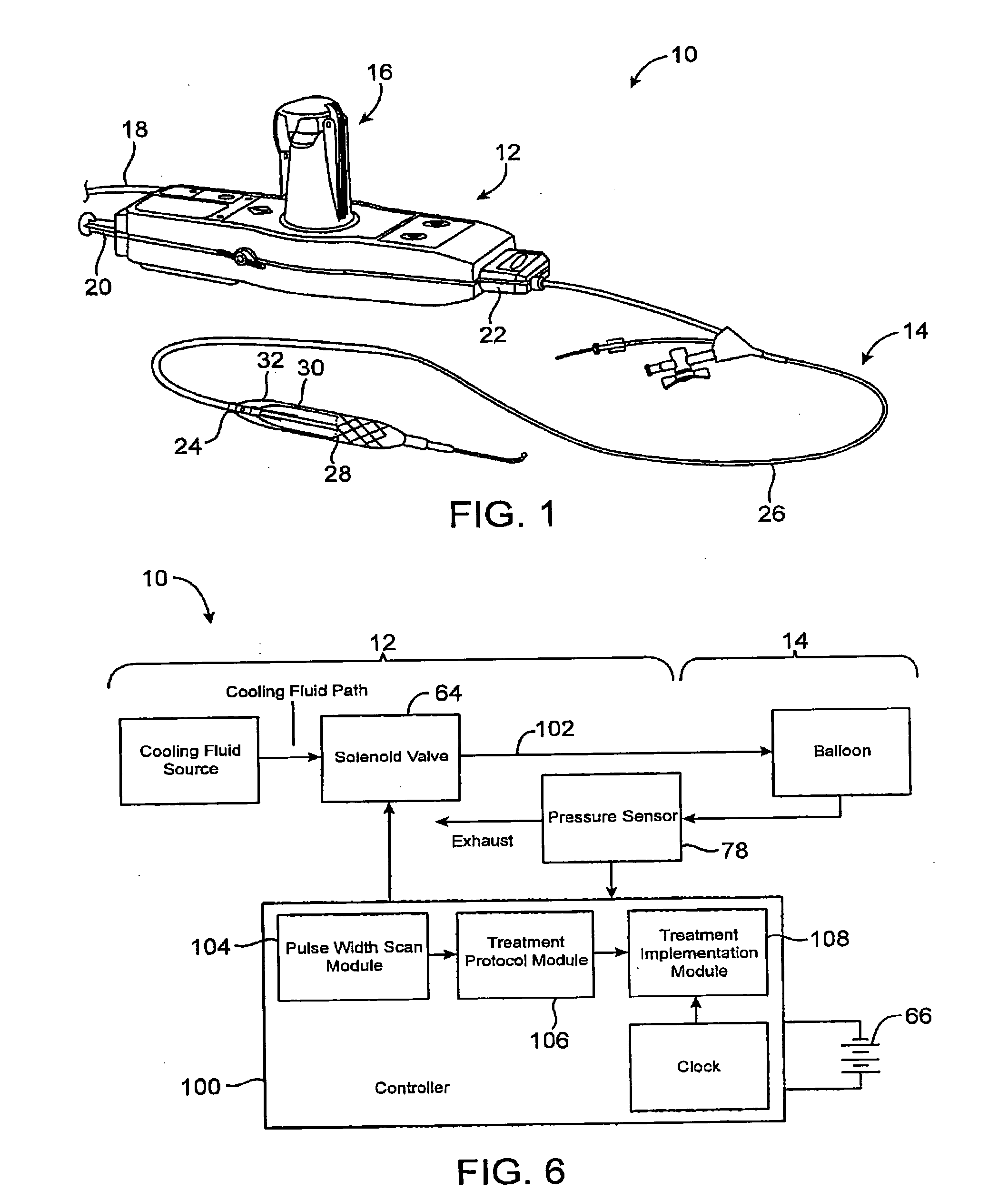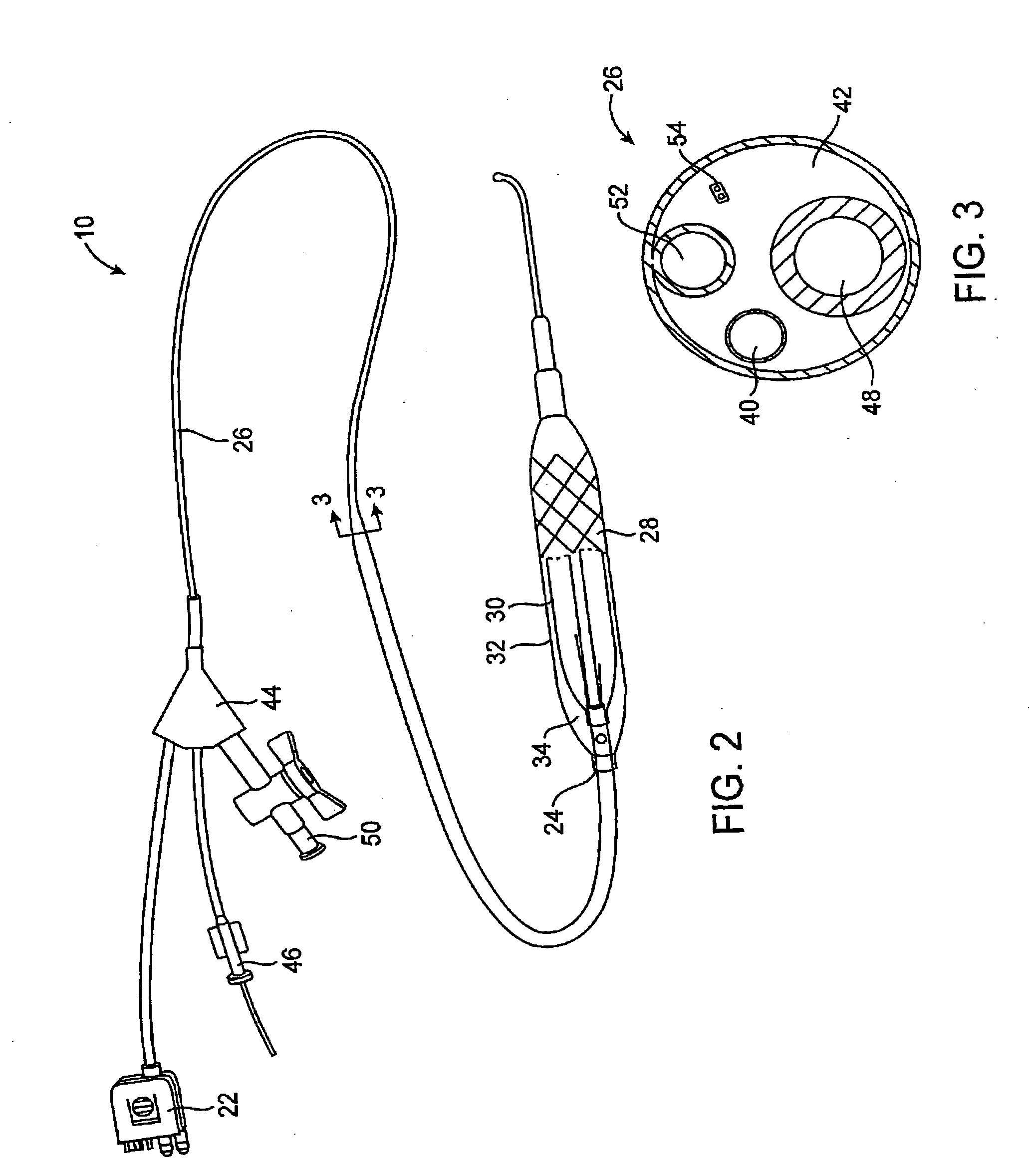Efficient controlled cryogenic fluid delivery into a balloon catheter and other treatment devices
a cryogenic fluid and balloon catheter technology, applied in the direction of catheters, contraceptive devices, operating means/releasing devices of valves, etc., can solve the problems of continual restnosis and excessive cost of implementing many, and achieve the effect of avoiding unnecessary release of cooling fluid
- Summary
- Abstract
- Description
- Claims
- Application Information
AI Technical Summary
Benefits of technology
Problems solved by technology
Method used
Image
Examples
Embodiment Construction
[0035] The present invention generally provides improved devices, systems, and methods for dilating and / or cooling treatments of the luminal wall in body lumens and other tissues of the body. The invention often makes use of a balloon which is inflated by a cooling fluid so as to radially engage a vessel wall (or other surrounding tissue). The cooling fluid will often change from a first phase to a second phase at least in part within the balloon, so that the latent heat of vaporization cools the surrounding tissues. Introduction of suitable cooling fluids is capable of very rapidly expanding the balloon once the cooling fluid begins to boil from a liquid to a gas phase (often occurring soon after the fluid enters the catheter). The invention is capable of providing advantageous control over the balloon inflation process, for example, allowing smooth and gradual changes to the pressure state within the balloon over time. As pressure and temperature are related in cryogenic cooling s...
PUM
 Login to View More
Login to View More Abstract
Description
Claims
Application Information
 Login to View More
Login to View More - R&D
- Intellectual Property
- Life Sciences
- Materials
- Tech Scout
- Unparalleled Data Quality
- Higher Quality Content
- 60% Fewer Hallucinations
Browse by: Latest US Patents, China's latest patents, Technical Efficacy Thesaurus, Application Domain, Technology Topic, Popular Technical Reports.
© 2025 PatSnap. All rights reserved.Legal|Privacy policy|Modern Slavery Act Transparency Statement|Sitemap|About US| Contact US: help@patsnap.com



